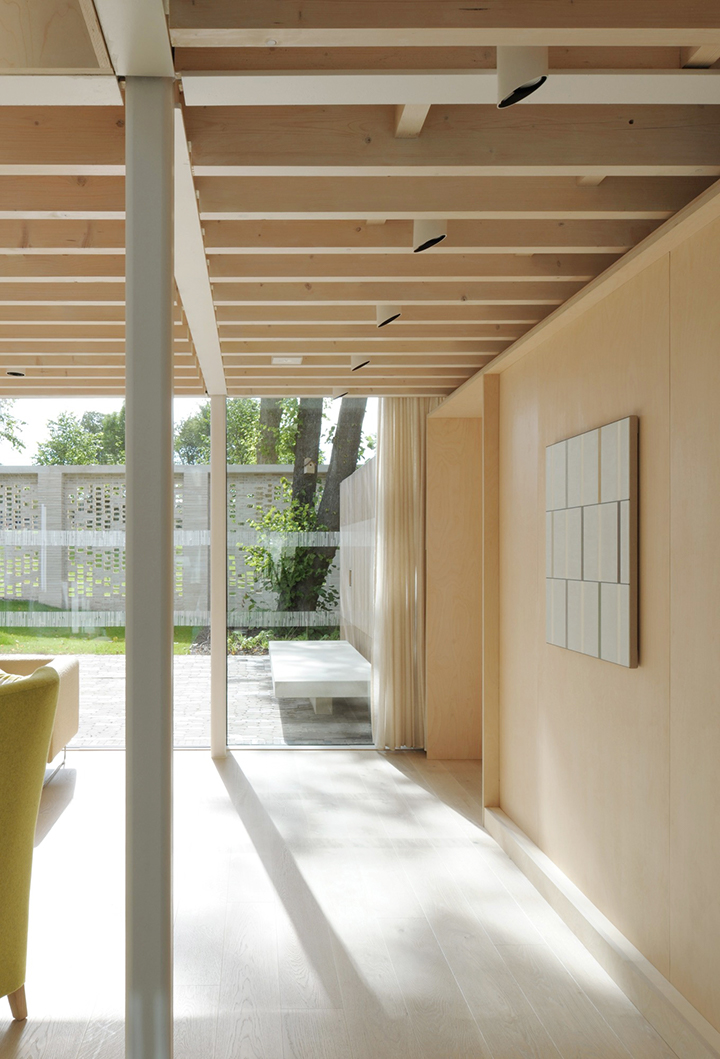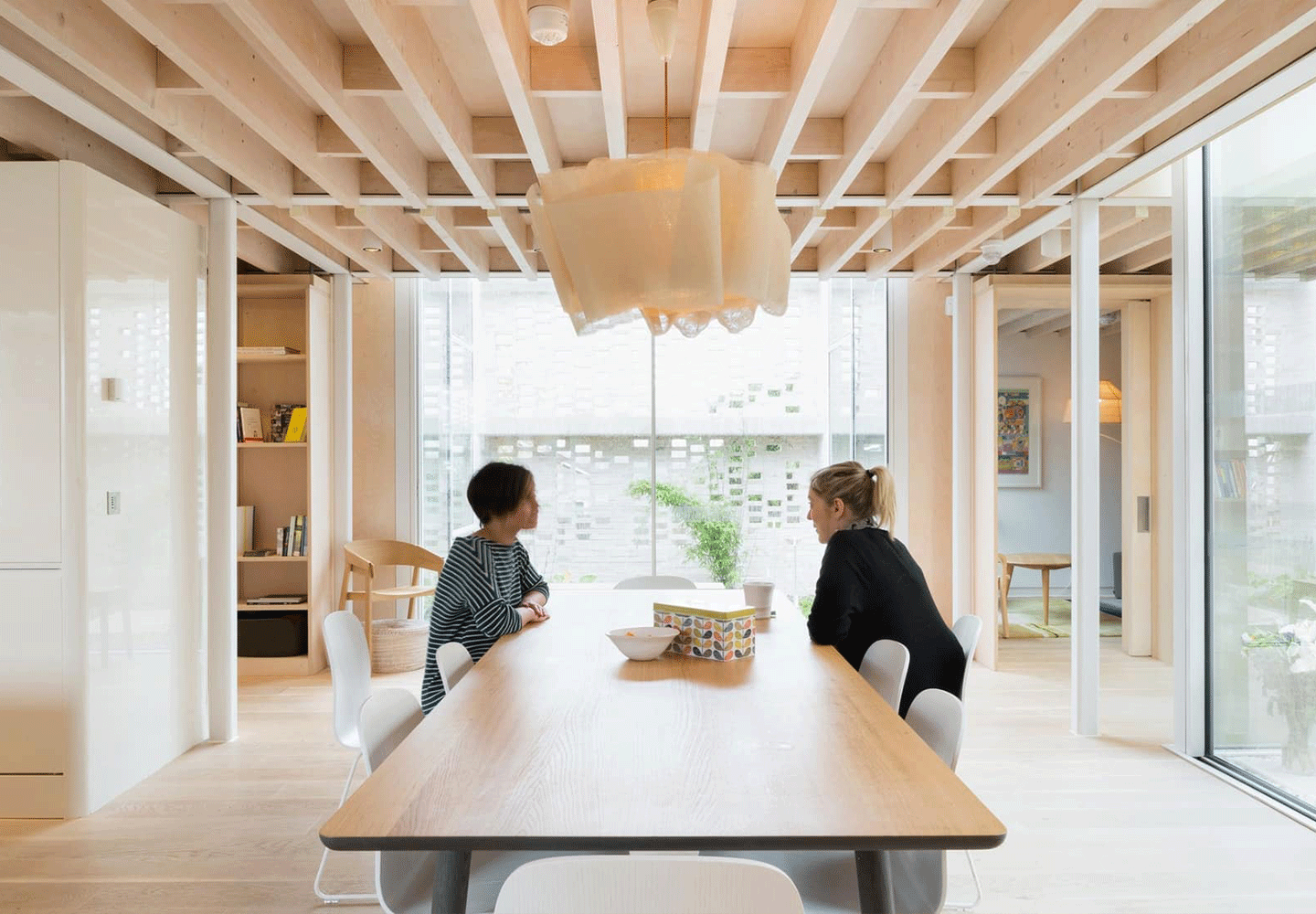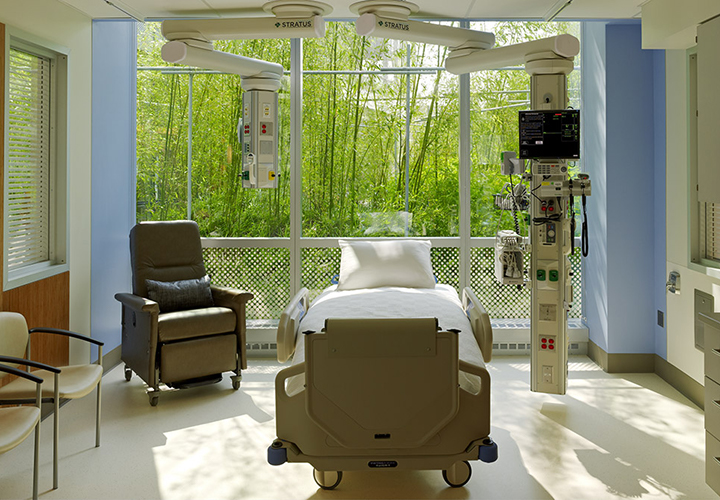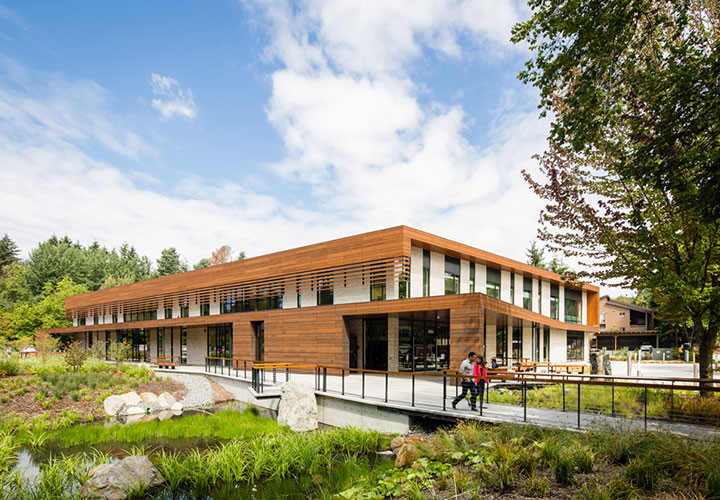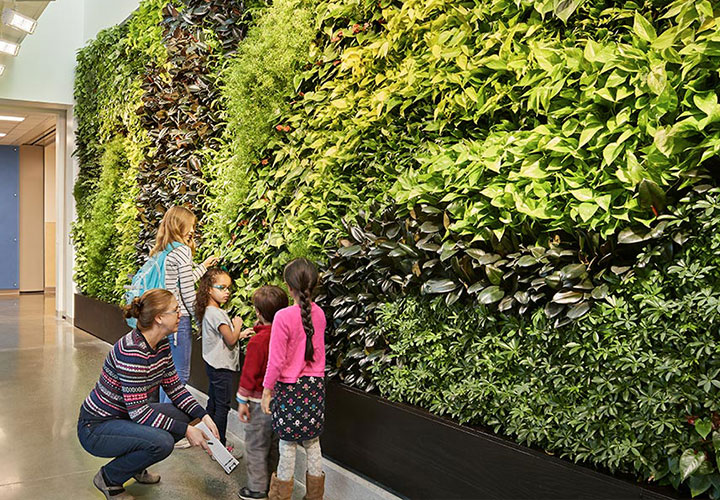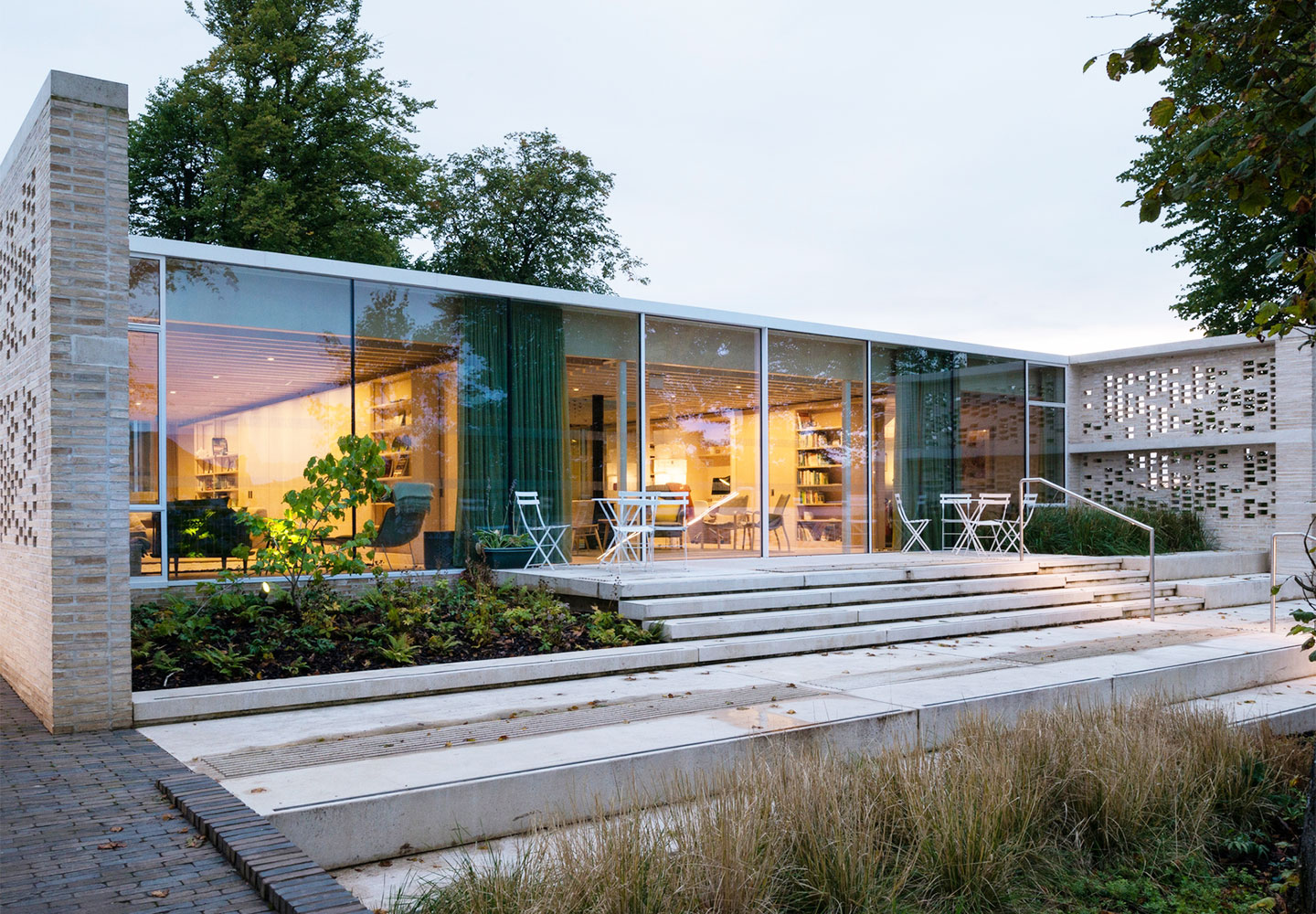We intuitively know the positive impact of nature on us, but did you know the use of nature in design has been proven to improve health and wellbeing?
Our health, wellbeing and overall happiness are proven to respond positively to the presence of nature. So, it’s no surprise that the use of nature within built environments, known as Biophilic Design, continues to grow in popularity among designers and architects.
Biophilic Design incorporates light, space, plants, water, vegetation, natural materials, natural shapes, natural patterns, and place-based relationships. It is used in the design, wayfinding and placemaking of schools, residential locations, commercial businesses, offices, hospitals, and healthcare facilities.
“Biophilic design is more than just bringing the outside in, it’s about making and strengthening a connection with many aspects of nature. It’s about natural light, views on nature, plants, natural materials, textures and patterns,” says Biophilic designer Oliver Heath.
Biophilic design and placemaking
Biophilic design can be used to create place-based relationships to connect the built environment to its location. Stephen Kellert describes these place-based relationships as “the successful marriage of culture with ecology in a geographical context”. This can be achieved through a historical, cultural, geographical, or ecological connection to the place. Designers can also use the landscape to define the building form or employ indigenous materials from the location.
We employed this technique when creating the Burwood Library and Community Hub, we photographed local gum trees and leaves and crafted these into glass graphics, which stretch the height of the library bringing the local nature into the building. A highlight of the library is a “reading tree” created from plywood and gum leaf canopy where people can curl up with a good book.
Maggie’s Centre Lanarkshire by Reiach and Hall Architects uses light and space within the cancer facility to mimic the natural landscape outside to create an illusion of space and nature throughout the building. By incorporating large windows, glass doors, and a series of internal courtyards and gardens the facility merges the outdoor and indoor environments to enforce the natural connection to place.
At The Garden School in Hackney, which caters to special needs students, using living vegetation was not an option, so instead, natural elements were mimicked throughout the school. The space incorporates natural textures, patterns, colours and images on the floor and wall coverings. It also employs tactile and sensory environments to create connections with nature.
Using design to heal, grow, sell and more.
Biophilic design has flourished within hospitals and healthcare facilities, thanks to significant evidence that it aids patient recovery. Patients exposed to biophilic designed environments – either directly or through interpretations of nature – have been found to have substantial healing benefits.
The Lunder Building at Massachusetts General Hospital (MGH) by NBBJ incorporated colour, natural light, floor to ceiling glass and natural vegetation to transform its urban location. In addition to environmental graphics, lighting, and sound design, a highlight in the building is a bamboo forest that can be viewed from patients beds or outdoors in the garden.
Education spaces that employ Biophilic design concepts have shown increases in attendance, learning rates, concentration levels, test results and even helped reduce the impacts of ADHD. Hazel Wolf K-8 in Seattle by NAC Architects features a host of gardens, including rain gardens, water gardens, botanical gardens and butterfly gardens. An enormous living wall inside the school’s entrance building sets the tone for the environment, providing movement, colour and natural inspiration.
And it’s not just healthcare and education; most built environments that incorporate Biophilic design report positive findings: offices are more productive, hotel guests are willing to pay more for rooms, property prices increase, and crime rates decline, and customers pay more for products.
With more of us living in urban environments, the integration of the natural world is more important than ever. Biophilic design is undoubtedly a trend that will continue to grow.
Above: Maggie’s Centre Lanarkshire cancer facility in Scotland by Reiach and Hall Architects. Below, clockwise from top left: Maggie’s Centre Lanarkshire by Reiach and Hall Architects, Lunder Building at Massachusetts General Hospital MGH by NBBJ, Meridian Center for Health in Seattle, USA by NBBJ and Hazel Wolf K-8 school in Seattle by NAC Architects.
